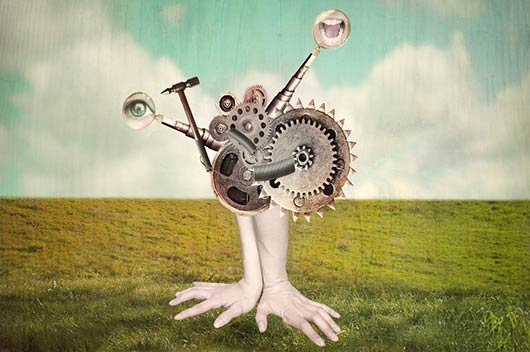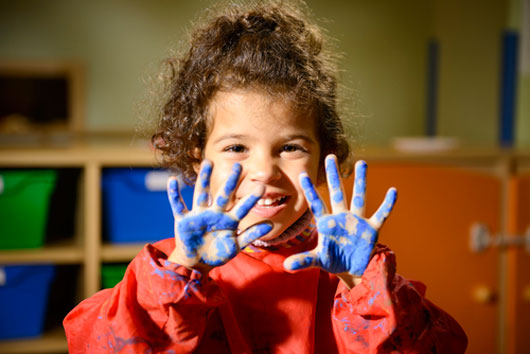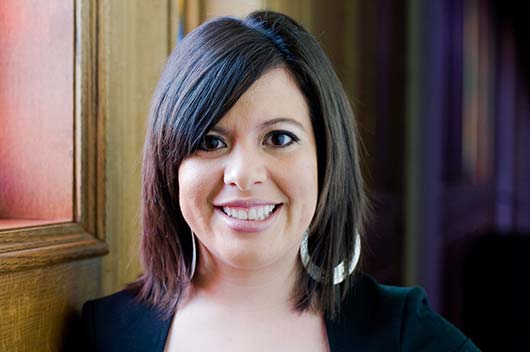
This post is in honor of Las Surrealistas, a group of female artists that include Frida Kahlo.
As mothers we have many titles—nurturer, chef, cleaning lady, chauffeur, analyst, accountant, tutor, cheerleader, so-and-so’s mother, etc. But how many of us have not dreamed of escaping that reality into a fantasy world where there were no titles, obligations, responsibilities or schedules? I don’t mean a vacation. I mean actually escaping into a completely unreal dreamscape where you can defy expectations, grow tall or short, thin or fat, drink tea with a mad hatter and the monotony of life is suspended for one brief moment in time. What would it be like to be Alice in Wonderland just for one day?
Read Related: 20 Quotes by Frida Kahlo
Well, I took a trip down the rabbit hole the other day without leaving Los Angeles and it was a blast. In Wonderland: The Surrealist Adventures of Women Artists in Mexico and the United States at the Los Angeles County Museum of Art features the work of 48 surrealist women artists from the late 1920s through the early 1970s. Some, like Frida Kahlo, are well known. The vast majority are not as familiar to most of us. The story of these women, as with so many other brave, innovative and strong females, has been overlooked or dismissed for many years.
ARTISTS IN THEIR OWN RIGHT
In their time, they struggled mightily to be recognized as artists in their own right, out of the shadows of their formidable male spouses or partners. They were attractive and intelligent and interested in art and so they gravitated toward men who appreciated their beauty and their interest. Usually, they entered the art world as the accoutrement to a famous man—Mrs. Max Ernst was otherwise known as Dorothea Tanning. Man Ray’s muse was really Lee Miller. It has only been until relatively recently that Frida Kahlo is named as an artist without the accompanying Diego Rivera beside her. Little did most of us know the force and talent most of these women possessed—until now.
Their art is familiar, like visiting an old friend and spending an afternoon sharing the incidents, encounters and events that happen in our lives. It is remarkable to see how connected we are in our experiences as women—regardless of era or vocation. Sometimes, we are tender like the mother feeding stars to a crescent moon in Remedios Varo’s Celestial Pablum.
WE ARE MYSTERIOUS, SENSUAL AND BEAUTIFUL
At other times we feel mysterious, coquettish and serene as in Muriel Streeter’s The Chess Queens, hiding behind veils, observing the world around us. Some days we feel sensual and beautiful and we want to celebrate our bodies like in Doris Lindo Lewis’ Mamscape where two mountainous nipples stand above an undulated valley and an open clam shell—an unabashed exploration of self. On other days, we see our bodies as the vessels toward illness or death as in Lee Miller’s portrait Severed Breast from Radical Mastectomy. Sometimes we feel desperate, scared and in search of love like Kahlo’s haunting Self Portrait with Thorn Necklace and Hummingbird.
If you ever feel like you blend in with the furniture, you will recognize Remedios Varo’s Mimesis and the woman who literally becomes a part of the chair, body stiff and wooden, with fabric skin and a silent, numb stare. Our constant search for self sufficiency is also on display. Jeanne Reynal’s The Widow, a black and white tile mosaic, is inspired by the legend of the Navajo Spider Woman who taught females the art of weaving. Of course, we also know that black widow females sometimes kill and eat their counterparts after mating….
LIGHTING THEIR OWN PATH
In Birthday, Dorothea Tanning’s, searing self portrait, she is bare breasted, with tentacle roots as a skirt and a deadly stare as frightening as the mythical Basilisk as her feet. Declaring your true self and lighting your own path is often seen as threatening when you are a woman.
And throughout the exhibit, the question keeps popping up. Why aren’t these women as recognizable as their male counterparts? Why haven’t more museums dedicated space and words and recognition on them? Perhaps Tanning, who was married to Ernst for many years, answered this question best with her poem, Stain:
Many years ago today
I took a husband tenderly
This simple human gentle act
Seen as a hard decisive fact
By all who dote on category
Did stain my work indelibly
I don’t know why that is
For it has not stained his.











